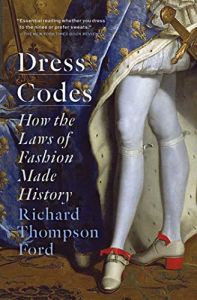Join getAbstract to access the summary!

Join getAbstract to access the summary!
Richard Thompson Ford
Dress Codes
How the Laws of Fashion Made History
Simon & Schuster, 2022
What's inside?
Dress codes reflect the struggle between individual expression and the status quo.
Recommendation
The first thing people see is what you are wearing, writes Richard Thompson Ford. He explains that – according to centuries of written and unwritten dress codes – your clothing indicates your social position, gender, class and ideology. Historically, dress codes seek to reinforce cultural hierarchies. Daring individuals who defy the rules in order to change their social standing are the ones who write fashion history. Fashion is, thus, a tool of visual expression and cultural oppression, underscoring the dance between humanity’s attempts to break free from societal labels and society’s efforts to keep everyone in line.
Summary
About the Author
As the George E. Osborne Professor of Law at Stanford Law School, Richard Thompson Ford studies and writes about employment discrimination, housing segregation and critical race theory. His other books include The Race Card: How Bluffing About Bias Makes Race Relations Worse and Rights Gone Wrong: How Law Corrupts the Struggle for Equality. Both titles were designated New York Times' Notable Books of the Year in 2008 and 2011, respectively.

















Comment on this summary